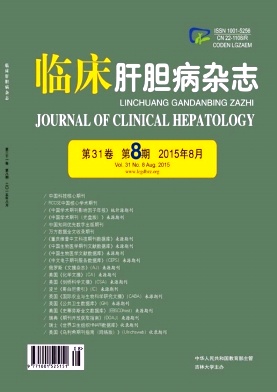Objective To assess the clinical efficacy of percutaneous transhepatic cholecystostomy in elderly patients with severe calculous cholecystitis. Methods The clinical data of 60 elderly patients with severe calculous cholecystitis were analyzed. All of the patients were divided into observation group and control group,with 30 cases in each group. In the observation group,the patients were treated with percutaneous transhepatic cholecystostomy combined with laparoscopic cholecystectomy; in the control group,the patients were treated by laparoscopic cholecystectomy alone. After treatment,the operative situation,time to improvement in clinical symptoms,and incidence of complications were compared. Comparison of continuous data between the two groups was made by t test,while comparison of categorical data was made by chi- square test. Results In the observation and control groups,the operative time,intraoperative blood loss,correction time of shock,recovery time of body temperature,recovery time of leukocytes,and recovery time of coagulation function were 23. 06 ± 3. 61 min vs68. 58 ± 11. 54 min,3. 09 ± 0. 31 ml vs 55. 90 ± 13. 73 ml,1. 12 ± 0. 13 d vs 2. 32 ± 0. 53 d,1. 60 ± 0. 22 d vs 2. 74 ± 0. 83 d,2. 08 ±0. 49 d vs 4. 32 ± 0. 94 d,and 1. 61 ± 0. 31 d vs 2. 95 ± 0. 52 d,respectively; the data were significantly different between the two groups( P < 0. 05). Furthermore,the patients from observation group displayed lower incidence rates of multiple organ failure and biliary fistula( P < 0. 05). However,there were no significant differences in the incidence of enterobrosis,pneumothorax,and liver injury( P > 0. 05).Conclusion For elderly patients with severe calculous cholecystitis,percutaneous transhepatic cholecystostomy can significantly improve the operative situation,shorten the time to improvement in clinical symptoms,and reduce the incidence of postoperative biliary fistula and multiple organ failure,and it is a reliable and safe therapy.







 DownLoad:
DownLoad: